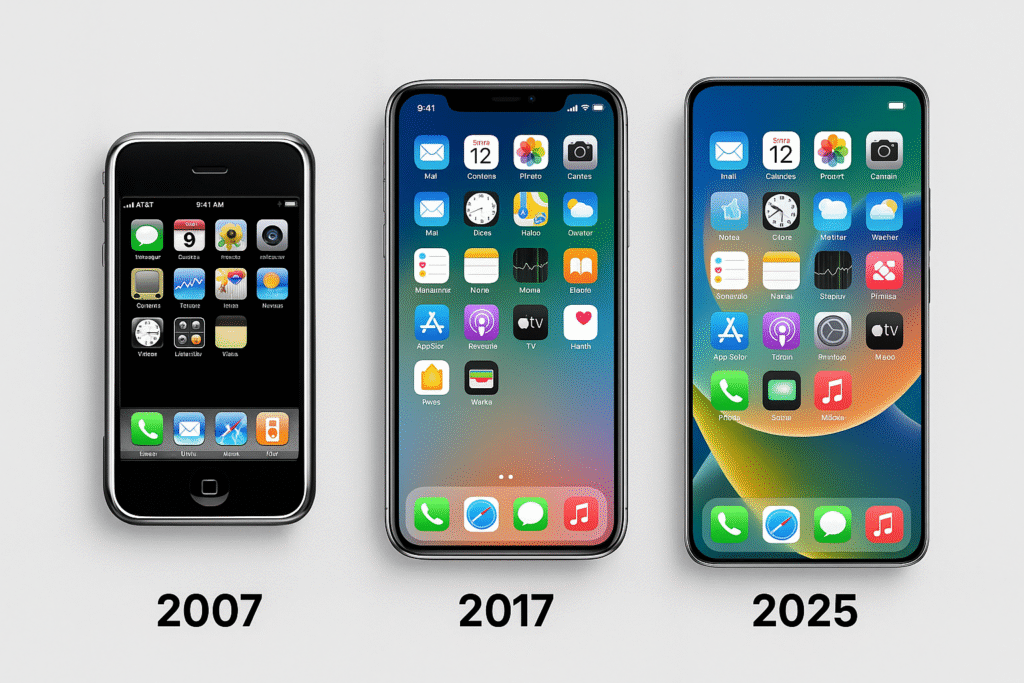
The Beginning – A Phone That Changed the World
In 2007, Apple introduced a device that changed technology forever: the original iPhone. With its shiny black body, a single round Home button, and a 3.5-inch screen, it looked simple but powerful. People were amazed — “Where are the buttons?” they asked. Apple proved that simplicity could redefine an entire industry.
The Leap – From Classic to Modern
Over the years, iPhone design evolved. The Home button slowly disappeared, the screens became larger, and bezels grew thinner.
In 2017, the iPhone X arrived — featuring an edge-to-edge OLED display and the iconic notch. For many, it felt like holding the future in their hands.
The Present – Sleek, Thin, and Strong
Today, the iPhone 17 Pro and the new iPhone Air represent Apple’s latest design vision.
- Titanium frame for strength and elegance.
- Ultra-thin body (just 5.6mm in the Air).
- Horizontal camera bar giving it a futuristic look.
These models are not just phones — they are luxury design pieces built for everyday life.
Beyond the Hardware – A Living Interface
Apple’s design story is not just about the outside. With iOS 26, the company introduced Liquid Glass, a new visual language.
- Translucent layers.
- Fluid animations.
- Dynamic reflections that adapt to light and motion.
Your iPhone screen now feels like living glass, blending hardware and software into one seamless experience.
The Future – What’s Next?
Foldable? Transparent? Or something we can’t even imagine yet? Apple rarely rushes, but history tells us one thing: the design story of the iPhone is far from over. The next chapter will continue to push boundaries.
Conclusion
From the classic 2007 model to today’s futuristic iPhone 17, Apple has proven that design is not just how a product looks — it’s how it makes you feel. Every new iPhone tells a story, and that story is still being written.
